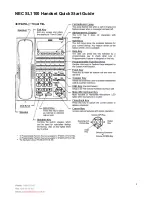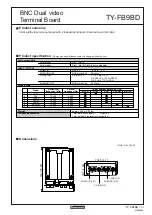
28
Damping Adjustments
There are three major ways in which you can vary the damping produced by the main piston: Shim
stiffness, shim pre-load and the amount of bleed past the shims. These graphs help to visualize the
way in which the damping is affected by each of these changes.
Figure 1
shows the effect of changing the pre-load (on digressive or VDP pistons) or dish (on linear
pistons). Adding pre-load will create a lot more low speed damping. In compression, it will cause the
tire to be loaded quicker and give a snappy feel. In rebound, it will help to tie the vehicle down and
let it take a set quicker.
Figure 2
shows the effect of increasing the stiffness of the shim stack. Increasing the thickness of
the shim stack (i.e., .004 to .010) stiffens the damping rate of the shock across the whole velocity
range. While the other two adjustments only affect the lower shaft speeds, the shim stiffness is
the best way to adjust damping at higher shaft speeds. The shims give the damping that chassis
dynamics require.
Figure 3
shows the effect of adding bleed to the piston. Bleed is simply a low speed bypass for the
shims and softens the shock at lower shaft speeds. This will improve the compliance of the bike to the
ground under low amplitude movements which can improve grip. It will give the rider a softer ride, but
will let the bike move more and take away support.
Figure 1
Содержание 8900 series
Страница 3: ...3 Notes ...
Страница 29: ...29 Damping Adjustments Figure 3 Figure 2 ...
Страница 34: ...34 Notes ...







































